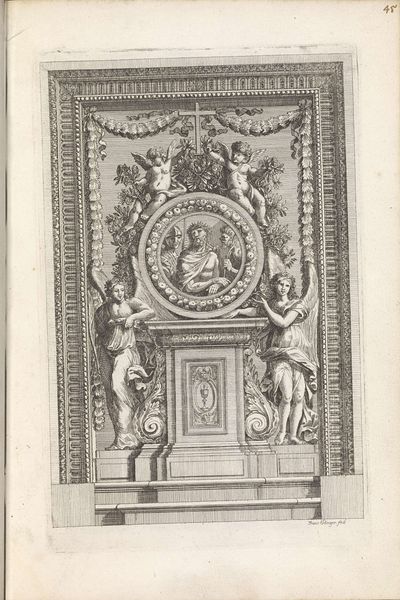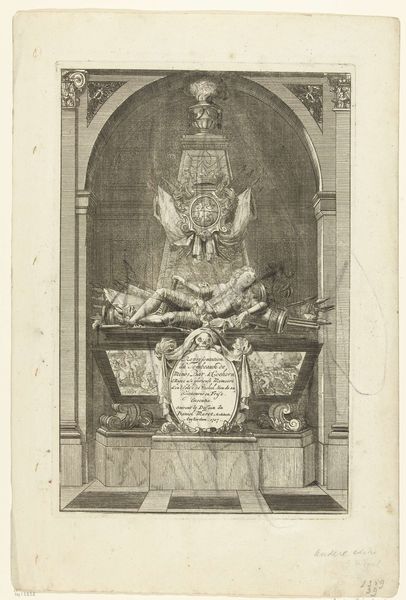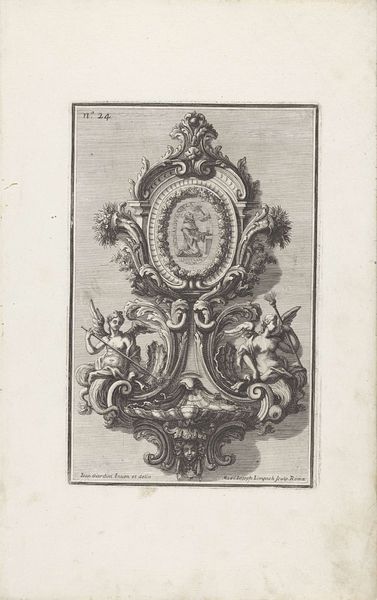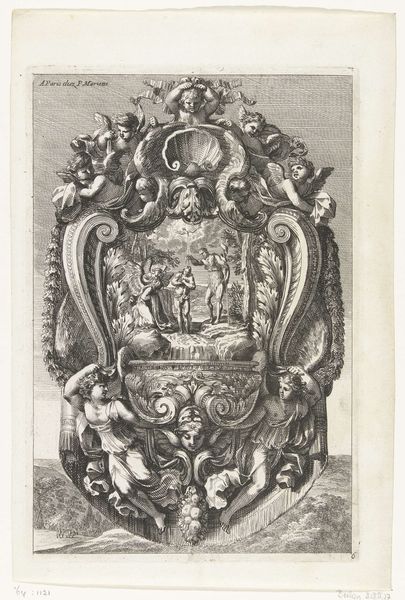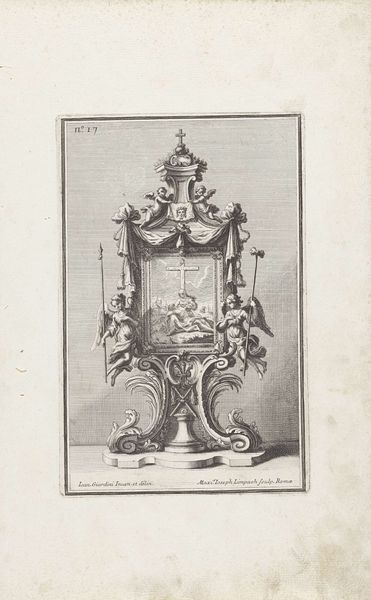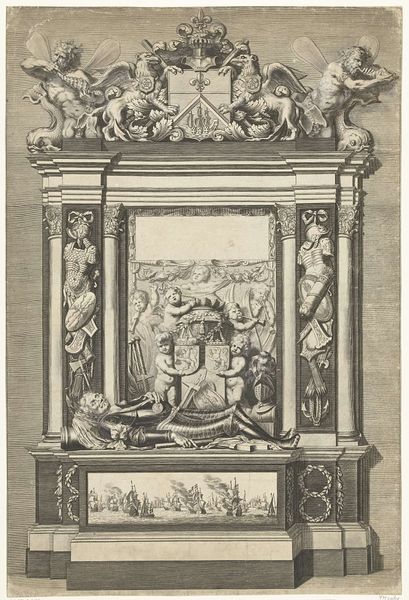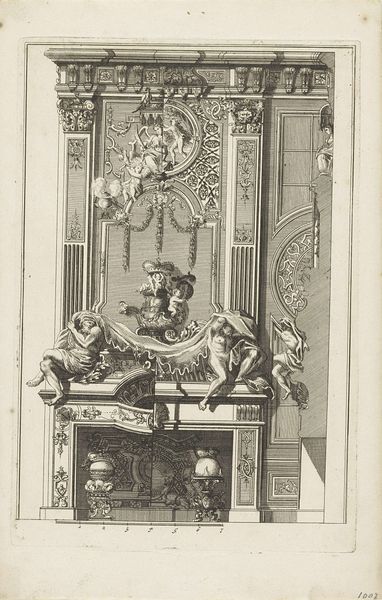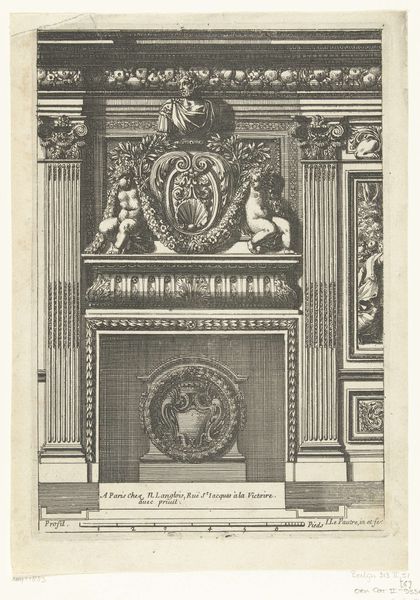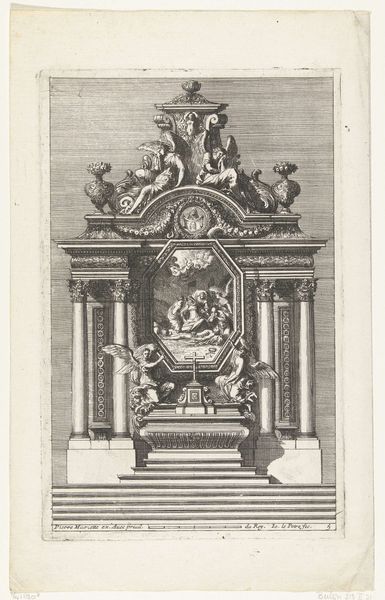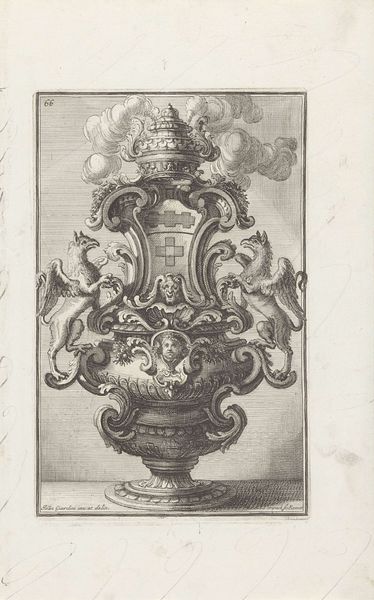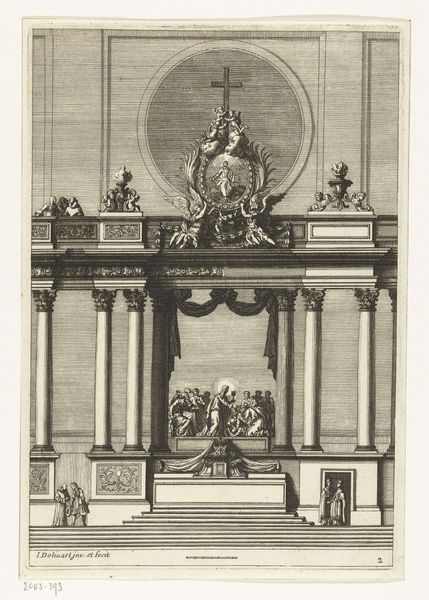
Muurpaneel met een voorstelling van Mozes die gevonden wordt door de dochter van de farao 1659
0:00
0:00
print, engraving
#
baroque
# print
#
figuration
#
form
#
line
#
history-painting
#
engraving
Dimensions: height 221 mm, width 149 mm
Copyright: Rijks Museum: Open Domain
Curator: This intriguing panel depicts the finding of Moses by Pharaoh's daughter and dates back to 1659. It's currently housed right here in the Rijksmuseum. Jean Le Pautre is credited with its design, rendered as an engraving. Editor: It feels grand, almost theatrical, doesn't it? The figures framing the central image—those muscular, straining men—immediately grab your attention. It creates this sense of monumental importance for such a small, delicately rendered scene. Curator: Exactly. It's important to note that prints like this weren’t simply artistic expressions, but tools. They served a vital function for disseminating design ideas in the decorative arts across Europe. This aesthetic language, brimming with classicizing elements, heavily influenced the decorative arts of the period. Editor: Absolutely. That oval frame they hold up, adorned with shells and grotesque masks...it’s like they're presenting a jewel. It echoes so many mythic images. Are those cherubic faces at the top another reference to heaven sanctioning power in leadership? Curator: More than likely. This image offered models to be reproduced across different artistic media from furniture design to architectural ornamentation. These figures symbolize the burden and the glorification of leadership at the highest levels of governance, playing into the narratives leaders crafted to justify the hierarchies of society. Editor: So this wasn’t simply art for art's sake. It’s art embedded in political aspirations, almost like an advertisement for an ideal. In an era where the Catholic Church held a vice grip over all narratives? It feels…coded. Moses would symbolize not only moral authority, but divinely appointed authority. Curator: Indeed, and this panel reflects a broader social shift as it represents not just art but an example of cultural currency deployed by the monarchy and aristocracy across the continent. These are symbols that could have helped justify the role of these institutions, especially regarding power over their citizenries. Editor: It's amazing to consider how much cultural narrative is packed into this print. I’ll certainly see it differently now. Curator: It provides an amazing window into the societal mindset of that era. The echoes are far reaching across centuries of cultural production.
Comments
No comments
Be the first to comment and join the conversation on the ultimate creative platform.

